This year, once again an exclusive list of foreign dignitaries, presidential associates, staffers, connections, and friends and family of the First Family have received their seasonal greetings from the White House. As was the case in 2011, the holiday card from the Obama’s features Bo, the First Family’s pet, a Portuguese Water Dog. The well executed artwork captures a sense of at least the Winter season with a happy little black and white illustration that was designed by Iowa artist Larassa Kabel and shows Bo wearing a scarf, while frolicking in the snow on the South Lawn of the White House. The inside of the card reads;
The card is signed by the entire First Family, including Bo, whose paw print adorns the inside.
Last year’s card also featured Bo and like last year, the 2012 greeting does not make any mention of Christmas. That omission which was also made in the 2009 White House cards, has been a source of great controversy for many. But the Obama cards are not the first to neglect the use of the word Christmas in their Christmas cards. Former President Bush did not use the phrase “Merry Christmas” in his cards either. However he did typically include passages from the Bible passages in his official seasonal greetings. In his last year in office, a verse from the Gospel of Matthew was used. It read;
“Let the light so shine before men, that they may see your good works, and glorify your Father which is heaven,”
Unlike President Obama’s card, Bush’s references to verses from the Bible did at least remind us that Jesus was the reason for the season. In the current White House, no such attempt is made.
The History of Presidential Christmas Cards
In her letter, Lucretia Walker Hardy wrote, ‘The event which Christmas commemorates means more to to the world as a whole than any other holiday we observe”. She added “The tree would be outward evidence of the President’s desire to give encouragement to the spirit of which it is symbolic”.
Hardy suggested that the tree come from President Coolidge’s native state of Vermont and after offering volunteering her public schools department for the purpose of erecting and decorating the tree, she invited President Coolidge to officiate over it’s lighting on Christmas Eve.
Due to a public event that the First Lady had already scheduled, the President’s Secretary had to deny Hardy’s request to use White House grounds for the ceremony on Christmas Eve, but the Ellipse was chosen as a suitable alternative for the event.
Not long after that, Middlebury College President Paul D. Moody penned a letter to President that read;
“Middlebury College counts it as a privilege to send to you, from its forest preserve in the heart of the Green Mountains , a National Christmas Tree. It is our hope that this Vermont Tree when electrically illuminated in Washington will contribute toward a spread of the Christmas spirit throughout the nation”.
On December 18th, the 60 foot fir tree was delivered to the Ellipse, and under the supervision and services of the Potomac Electric Power Company, the tree was hauled in to place, just south of the Department of Treasury. The whole operation cost $500 and it included the expense of adding an electronic button that would allow the President to light the tree from the Executive Office.
At 5:05 pm, after walking to the Ellipse, President Coolidge stepped on the electronic button and lit the 3,000 light bulbs that adorned what was the nation’s first National Christmas Tree. While “Silent Cal” did not deliver a speech at the lighting ceremony, a choir and quartet played with great fanfare and at 7:00 PM the Marine Band played holiday music in a concert before thousands of spirited spectators.
Two hours later, Grace Coolidge orchestrated another display of holiday joy from the White House. Inspired by the the hymns she listened to at her church, Grace arranged for the appearance of 65 members of the First Congregation Church for the singing of Christmas carols. With the help of the Chesapeake and Potomac Telephone Company, the event was heard by an estimated 1 million people via a broadcast over the radio station WCAP.
The Washington Post described the scene this way;
“From the steps of the White House there went forth last night a message of peace on earth, goodwill to me. It was the message echoing down through the ages from the days of the three shepherds, and as it passed from the throats of a choir on the portico of the White House, it was echoed by the President and his family and thousands of citizens, all in harmony with the re-echo in the hearts of the people of the nation and the rest of the world. It was the reverence of a Christian people giving at the seat of their government the expression of their praise for the “King of Kings” on the eve of his birth”.
That first Christmas at the White House for the First Family, was the last that they would all spend together. In the summer of 1924, 16 year old Calvin, Jr. died from Staphylococcus septicemia or as it is more commonly known ……. a staph infection, something which typically starts out on the skin but may enter the bloodstream through a cut or other opening in the skin.
However, in the years to follow, the public events of their first Christmas in the White House continued and in 1927 Coolidge wrote the first presidential Christmas message designed to address the nation as a whole. It appeared in every major newspaper on Christmas morning and received an overwhelmingly appreciative response that prompted thousands of telegrams to the White House which praised Coolidge for his heartfelt expression.
Over the years the holiday message became more personal and more aesthetically pleasing and as more time passed, the White House Christmas card became an official task of the first family that has inspired the commissioning of famed artists and the plight to find a unique way to reflect the character of each new family that has occupied the White House
As is the case with all traditions, they begin to take a life of their own as they experience a process of natural evolution that incorporates such things as public sentiments and trends, technology, and other influences, yet through it all, no matter what new spin is added, traditions all begin with first steps and in the case of the White House Christmas cards, those steps were taken by the Coolidges.






 In 1946 the Trumans designed 800 of the following enclosures that went along with the picture shown below of the Trumans boarding the President’s private plane.
In 1946 the Trumans designed 800 of the following enclosures that went along with the picture shown below of the Trumans boarding the President’s private plane.
 Between 1948 and 1952, Harry and Bess Truman lived in Blair House as the White House underwent renovations. So the President directed the Government Printing Office to print 1,000 copies of the following photo of the Blair House. It was given as gifts to the White House staff by President Truman during a 1951 pre-Christmas ceremony on December 22nd.
Between 1948 and 1952, Harry and Bess Truman lived in Blair House as the White House underwent renovations. So the President directed the Government Printing Office to print 1,000 copies of the following photo of the Blair House. It was given as gifts to the White House staff by President Truman during a 1951 pre-Christmas ceremony on December 22nd.
The President’s Personal, Artistic Touch: Christmas from the Eisenhowers
Although he was not a trained artist, Dwight D. Eisenhower was an avid amateur painter. As such, he allowed six of his works to be turned into Christmas gifts for the White House staff. According to Mary Evans Seeley, a collector of Presidential Christmas memorabilia and author of Season Greetings from the White House, President Eisenhower wrote the President of Hallmark, Joyce C. Hall the following;
“As you know I always hate to inflict art on my friends and members of my staff, but Hallmark makes such a beautiful package job that I am, and I hope others are, distracted into the belief that the whole thing is a superior product”.
With that came many Eisenhower renderings that were included with Christmas Cards:
An interesting story accompanies the second Eisenhower Christmas card. Hallmark designed two personal cards for the President and First Lady. One was a white card embossed with with a wreath along with a red bow and red berries. According Mary Evans Seeley, the day the cards were going to be shipped staff discovered that the ink from the red ribbon and berries were smearing on each of the cards. Suddenly, dozens of Hallmark artists were recruited in to an emergency operation which forced them to place a dab of clear nail polish on each berry and bow. The smudging crisis was solved and the cards were shipped to the White House via TWA.
The other personal card became a favorite of the First Lady. It was trademarked as the “Mamie Bangs” card and caricatured Mamie Eisenhower’s characteristic bangs.
This Christmas gift print of the Green Room was given out with the Christmas card above in 1957
In 1957, this card was the personal enclosure that accompanied the the gift print below it
The image below is another painting by President Eisenhower that was reproduced and used as a White House Christmas gift print
And here is the very contemporary Christmas card provided by the Eisenhowers in 1958.
The Kennedy Cards
With the entrance of Kennedy’s in the White House came the touch of refined tastes that did not allow for caricatures and the bland and drab. So After Hallmark designed a a Christmas card that was similar to one the Eisenhower’s used, Jackie took special care to add her own touch to the now traditional presidential season greetings. In 1962 after Jackie oversaw an extensive updating of the White House and then introduced the nation to her home in a nationally televised tour, the home furnishings editor of the Philadelphia Bulletin want to do a special spread on the First Family’s updated digs. But after sending a photographer to take pictures of the renovated home, the editor rejected them and instead sent over Edward and advertising-illustrator artist to draw some sketches instead.
While doing one of his sketches, Mrs. Kennedy happened to see Lehman, got in to a discussion and was impressed by his work. After a particular Lehman painting of the Red Room appeared in the Philadelphia Bulletin, the Kennedy’s were extremely impressed and Jacki soon turned Lehman’s painting of the White House into cards Christmas Cards and gifts.
The Rarest of all Presidential Christmas Cards
A few days before President and Mrs. Kennedy departed for Texas in an attempt to begin his campaign for reelection, 500 special Christmas cards featuring a crèche that was in the Green Room of the White House, were delivered to the White House. With the holiday season under way and Christmas fast approaching, they began to sign these cards on November 20, 1963. Mrs. Kennedy signed in blue ink and the President signed in black. The few cards that were signed had not yet been mailed and after the tragic events of November 22, 1963, they never were.
In fact, at the time there was no record of the cards, not even in the Kennedy Library. But in 1985 fewer than 30 of these dual signed cards were discovered. They are now perhaps both the saddest and rarest Christmas cards in American history. 
Below is the official Kennedy White House Christmas Card for 1962 
The Johnson White House
5 days after taking office upon the tragic death of President Kennedy, the State Department asked President Johnson what he wanted to do in regards to a Christmas card. The decision was made to send our a very simple and sedate season greeting.
The Johnson’s 1963 Christmas Card
This beautiful Christmas card in the image below depicts the official White House Christmas Tree and it became the Johnson’s official Christmas card in 1967 
A brief look at other Presidential Season’s Greeting Cards
The N.C. Wyeth painting of “Building the First White House” depicted here, was a patriotic poster used by the Pennsylvania Railroad and in 1971 the Nixon’s had Hallmark use it for the White House’s official Christmas Card
This George P. A. Healy painting (right) of Abraham Lincoln was the Nixon gift print that was sent out to many along with the Christmas card depicted above
A George Durie painting entitled Farmyard in Winter became the source for this 1975 Gerald Ford Christmas card
Mrs. Carter discovered this hand colored wood engraving of the White House (left) and it became the Carter’s official 1978 Christmas card
The painting above is a work by Thomas Williams Jones and it is of the North entry to the White House. It became the cover for this 1988 official Christmas card for the Reagans.
George and Barbara Bush commissioned artist Mark Hampton to do this watercolor of the Oval Office for their 1990 Christmas card
This 1992 Bush gift print of the National Christmas Tree was drawn by Kamil Kubik
As the Clinton’s moved in to the White House, Hallmark kind of lost its historic place in the handling of the White House Christmas. Instead the Clinton’s chose to go with American Greetings, a greetings card competitor to Hallmark that was a longtime friend of the Clinton’s, big financial supporter of his campaign, and a member of the American Greetings Board of Governors.
So in 1993, the Clinton’s received Charlie Riddle, creative director for American Greetings, and they worked with him on developing a Christmas card photo of the First Couple that conveyed the exact sense of wholesomeness and warmth that the First Lady specifically requested. The end product was the photo used on the card below. It features the President and Mrs. Clinton in the State Dining Room, next to a Christmas Tree and off to the side of a fireplace with the Lincoln portrait hanging right above it.
 In 2002 Hallmark was back in the game of prersidential greetings as President George W. Bush and First Lady Laura Bush began a tradition of including Bible verses in their season’s greetings.
In 2002 Hallmark was back in the game of prersidential greetings as President George W. Bush and First Lady Laura Bush began a tradition of including Bible verses in their season’s greetings.
This card featured a 1938 Steinway piano housed in the Grand Foyer of the White House.
The Bush’s 2008 card
 Another Hallmark production was selected by the White House for the 2008 presidential holiday card above. The card image shows a view from the Truman Balcony of the White House. Mrs. Bush selected Maine artist T. Allen Lawson to create the original artwork for the card.
Another Hallmark production was selected by the White House for the 2008 presidential holiday card above. The card image shows a view from the Truman Balcony of the White House. Mrs. Bush selected Maine artist T. Allen Lawson to create the original artwork for the card.
The Obama’s card used for Christmas 2011;
As we all take a brief but much needed from break from politics White House 2016 leaves you with these words spoken by Ronald Reagan from the White House in 1985.
“Let us reach out tonight to every person who is persecuted; let us embrace and comfort, support and love them. Let us come together as one family under the fatherhood of God, binding ourselves in a communion of hearts, for tonight and tomorrow and for all time. May we give thanks for an America abundantly blessed, for a nation united, free, and at peace. May we carry forward the happiness of the Christmas spirit as the guiding star of our endeavors 365 days a year. And as we light this magnificent tree, may all the youthful hope and joy of America light up the heavens and make the angels sing.”
“Merry Christmas, ands God bless you all.”
Woefully incapable of saying it any better ourself, on behalf of White House 2016 we quite simply state, “ditto”.
 Merry Christmas from
Merry Christmas from
White House 2016
Filed under: General Issues & Events | Tagged: Anthony Del Pellegrino, Bo on the White House Christmas card, Christmas at the White House, Christmas history, history of Christmas, History of Presidential Christmas Cards, History of the White House Christmas tree, kempite, Kennedy Chrsitmas cards, Obama's Christmas card, Obama's Chrsitmas card, Reagan Chrsitmas cards, wh16, white house 2016, White House Christmas, White House Holiday card, whitehouse16.com, wordpress political blogs |



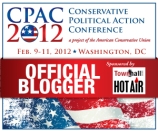

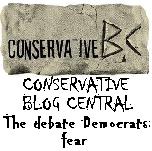
 Online Conservative Talk Radio
Online Conservative Talk Radio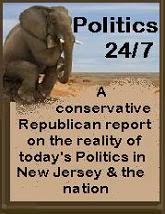 Poitics 24/7
Poitics 24/7 The Bulldog Pundit
The Bulldog Pundit The Right Scoop
The Right Scoop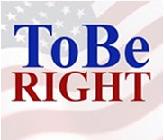 To Be Right
To Be Right Verum Serum
Verum Serum





















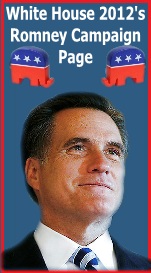
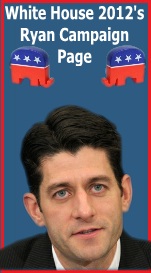
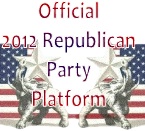




 Mark Levin
Mark Levin Michelle Malkin
Michelle Malkin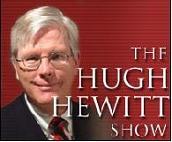 The Hugh Hewitt Show
The Hugh Hewitt Show

The creche featured in the 1963 Kennedy Christmas card was actually in the East Room, according to the card, and not in the Green Room.